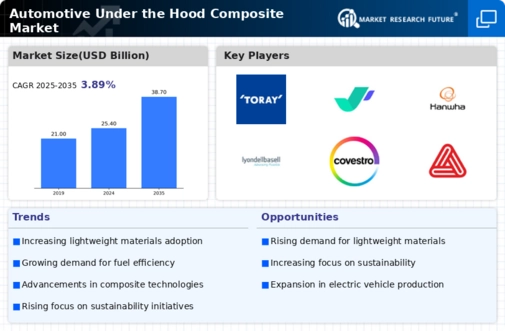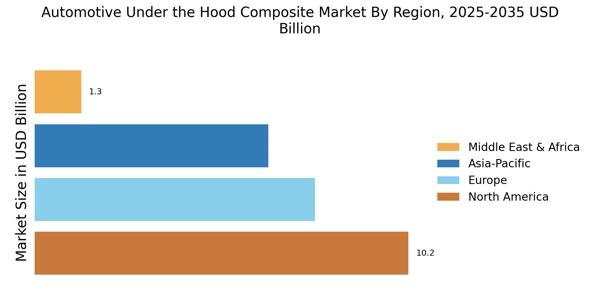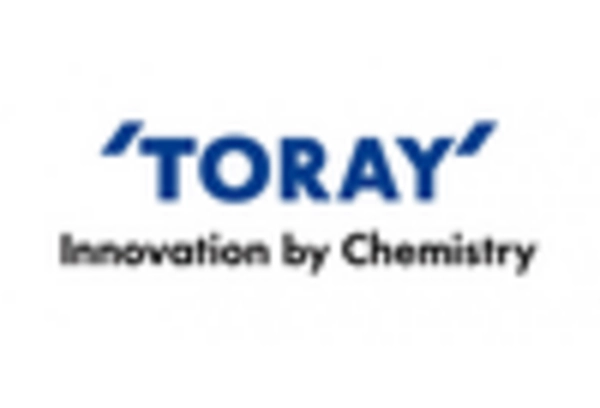Enhanced Thermal Management
In the Automotive Under the Hood Composite Market, enhanced thermal management is becoming increasingly critical. Composites are known for their superior thermal resistance, which is essential for components exposed to high temperatures under the hood. The ability of composite materials to withstand thermal stress without degrading is a significant advantage, particularly in the context of modern engines that operate at higher temperatures. This characteristic not only improves the longevity of components but also contributes to overall vehicle performance. As automotive manufacturers seek to optimize engine efficiency and reduce thermal losses, the demand for advanced composite materials is likely to grow, further propelling the Automotive Under the Hood Composite Market.
Weight Reduction Initiatives
The Automotive Under the Hood Composite Market is experiencing a notable shift towards weight reduction initiatives. Manufacturers are increasingly adopting composite materials to enhance fuel efficiency and reduce emissions. Composites, being lighter than traditional metals, contribute to overall vehicle weight reduction, which is crucial in meeting stringent regulatory standards. For instance, the use of composites can lead to a weight reduction of up to 30% in certain applications. This trend is particularly relevant as automotive companies strive to comply with environmental regulations while maintaining performance. As a result, the demand for lightweight composite materials is expected to rise, driving growth in the Automotive Under the Hood Composite Market.
Cost-Effectiveness of Composites
The cost-effectiveness of composites is a driving factor in the Automotive Under the Hood Composite Market. While the initial investment in composite materials may be higher than traditional materials, the long-term savings associated with reduced maintenance and improved fuel efficiency can offset these costs. Additionally, advancements in manufacturing processes have led to a decrease in production costs for composite components. This trend is particularly appealing to automotive manufacturers looking to balance performance with budget constraints. As the industry continues to evolve, the economic advantages of using composites are likely to attract more players to the Automotive Under the Hood Composite Market.
Regulatory Compliance and Standards
Regulatory compliance and standards play a pivotal role in shaping the Automotive Under the Hood Composite Market. Governments worldwide are implementing stricter emissions and safety regulations, compelling manufacturers to adopt innovative materials that meet these requirements. Composites offer a viable solution, as they can be engineered to meet specific performance criteria while also contributing to weight reduction and improved fuel efficiency. The increasing pressure to comply with environmental standards is driving the adoption of composite materials in automotive applications. Consequently, the Automotive Under the Hood Composite Market is expected to witness significant growth as manufacturers seek to align with regulatory demands.
Rising Demand for Electric Vehicles
The rising demand for electric vehicles (EVs) is significantly influencing the Automotive Under the Hood Composite Market. As the automotive landscape shifts towards electrification, the need for lightweight and efficient materials becomes paramount. Composites are particularly well-suited for EV applications, as they help reduce overall vehicle weight, thereby enhancing battery efficiency and range. The integration of composites in EV manufacturing not only supports performance but also aligns with sustainability goals. As more consumers opt for electric vehicles, the Automotive Under the Hood Composite Market is poised for substantial growth, driven by the unique advantages that composite materials offer in this evolving market.


















Leave a Comment